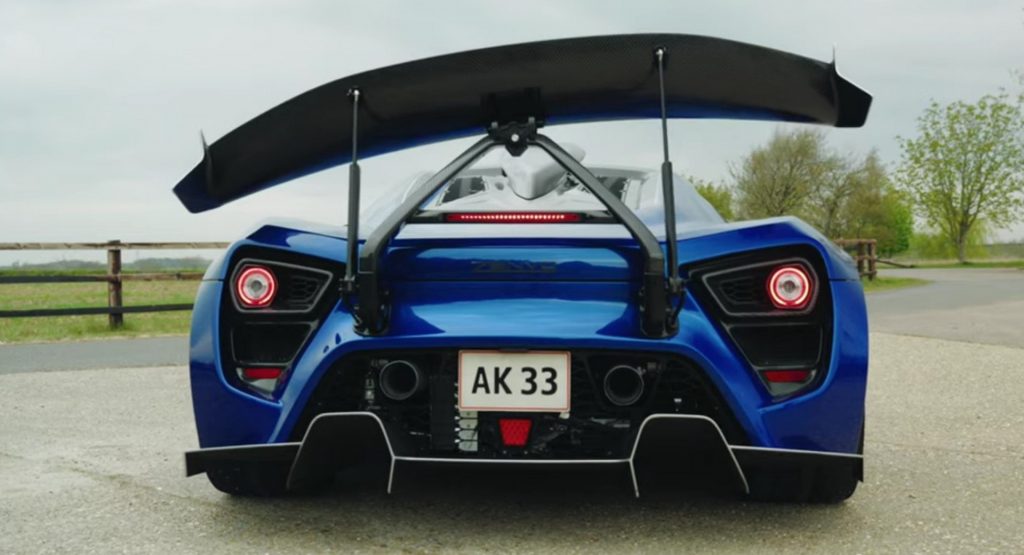The Danish car industry isn’t exactly enormous, but that hasn’t stopped the mad scientists at Zenvo from trying to take on the world’s best hypercars with an effort of its own: the TSR-S.
With prices starting at €1.45 million ($1.77 million USD) and pumping out 1,177 hp from a twin-supercharged 5.8-liter V8 made in-house that can get it to 60 mph in a claimed 2.8 seconds, it certainly has the numbers to take on the hypercar establishment. But the ridiculously well-heeled are well-catered to these days. How do you make a mark?
For Zenvo, its gambit for attention is a “centripetal wing.” Big wings have long fascinated, so the company decided to take it a step further and add two hydraulic actuators and a couple of hinges to the car’s rear wing so that it flaps around while you’re driving. The idea is that by tilting the wing by up to 20 degrees, it can move downforce from side to side and increase cornering grip.
Read Also: 1,177 BHP Zenvo TSR-S Hypercar’s UK Debut Celebrated In 104 Photos
That’s the theory anyway, but Road & Track‘s Marshall Pruett argued in 2018 that the flappy wing could do more harm than good.
Pruett’s skepticism stemmed from the fact that simply adding more downforce at one corner of a car isn’t enough to make it handle better. A car is a lot like a skateboard and if you put all your weight on the back then the front wheels lift and you get understeer.
In this video from Carfection, host Henry Catchpole quotes Zenvo which says that the wing moving from side to side reduces overall downforce by 3%, but moves the force from side to side by up to 30%. Essentially, their argument is that it isn’t adding more weight to the back of the skateboard, just changing where the weight that’s already there is pressed.
That may not address Pruett’s concern about the front wheels (specifically the one across the car diagonally, which may start losing grip), but is a fun fact to tell your friends when they see your Zenvo for the first time.
Whether or not a former race car engineer is satisfied with the physics behind the wing may be beside the point. From behind the wheel, Catchpole reports that the Zenvo is a pretty well-sorted car for the road (albeit one with a bit of understeer, though that feels intentional and reassuring), and seems more thrilled by the wing’s ridiculousness than put off by its questionable effectiveness.
And maybe that’s the Zenvo‘s cleverest trick. The logic behind its wing is just cartoonish enough that it makes sense for something commonly referred to as a hypercar. The whole industry is silly. Why not have a silly wing?





